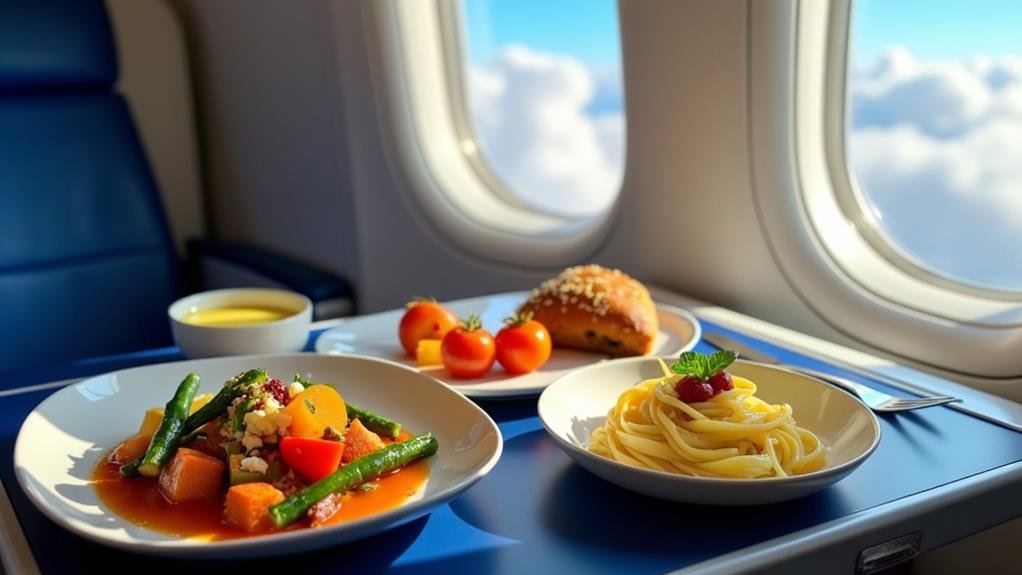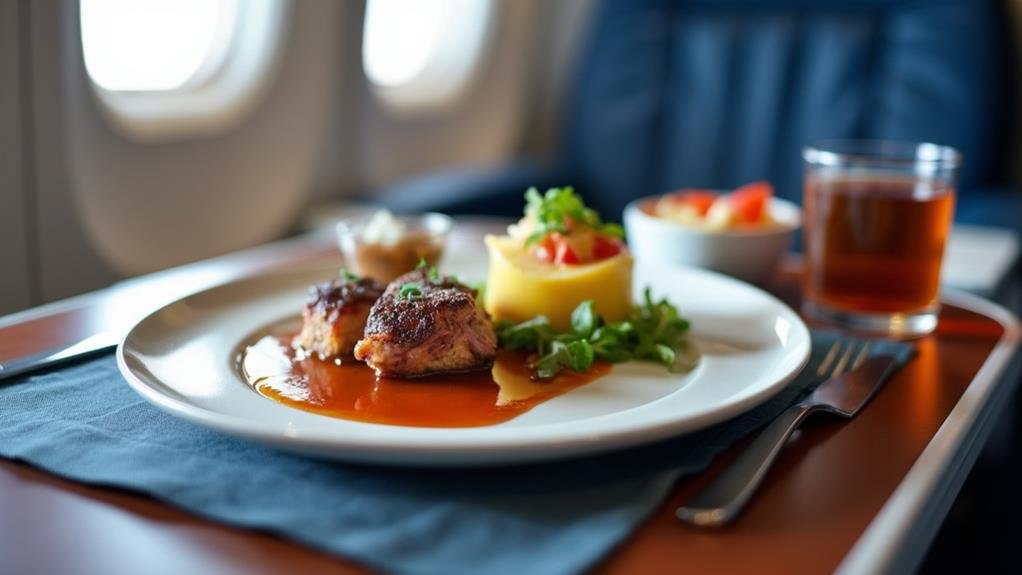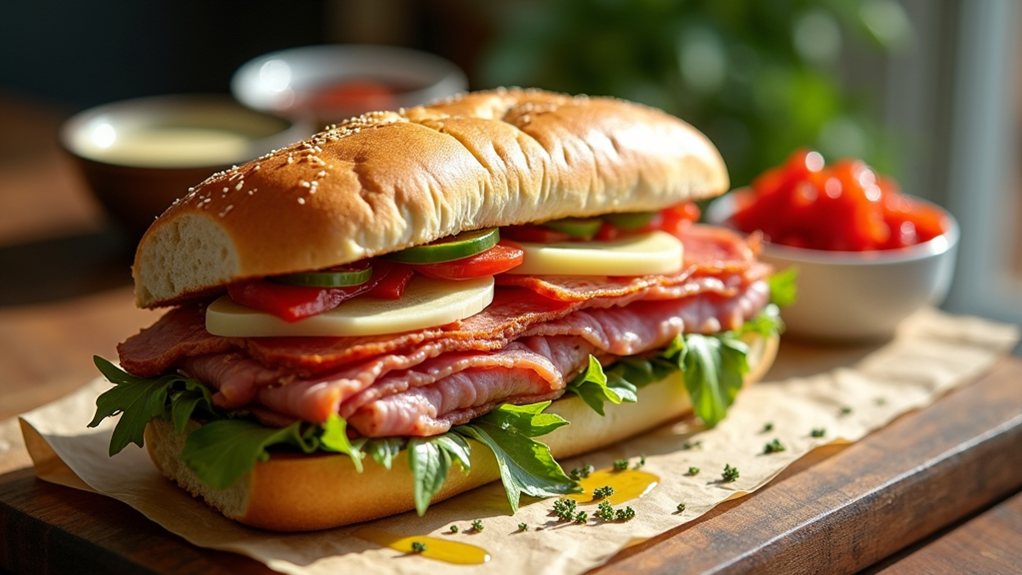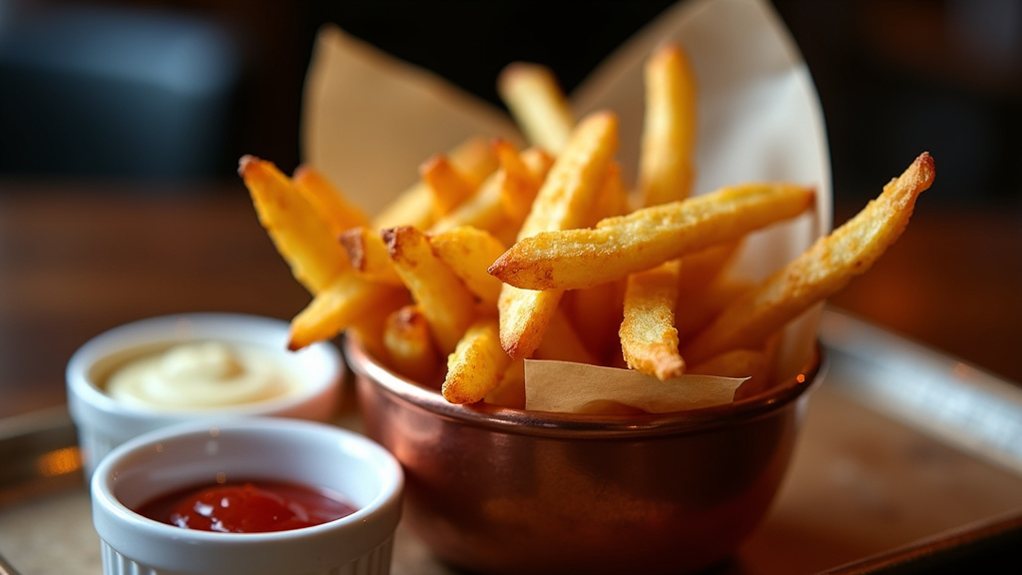Food tastes different on planes due to low humidity and reduced air pressure, which change our taste perception. At high altitudes, the sensitivity of taste buds decreases, making sweet and salty flavors less noticeable. Conversely, sour, bitter, and spicy flavors remain more consistent. To counteract this, airlines often increase sodium and sugar levels in their meals by around 30%. Furthermore, meals are prepared on the ground and flash-frozen to maintain quality. This meticulous culinary adjustment demonstrates a profound understanding of how altitude affects taste, allowing airlines to improve the dining experience despite environmental challenges. Exploring further reveals more intriguing insights.
Preparation of Airplane Meals
Airline meal preparation involves a careful process that ensures food remains flavorful, despite the challenges of in-flight dining. Airline caterers, such as Gate Gourmet and LSG Sky Chefs, modify recipes to counteract low humidity and reduced air pressure, which impact taste perception. For instance, airplane meals often contain about 30% more sodium and sugar compared to typical meals served on the ground. This adjustment aims to enhance flavor profiles that may become muted during flights.
To ensure quality, meals are initially prepared on the ground, taste-tested onboard, and then flash-frozen to maintain freshness. This dual cooking method allows for flavor retention while adhering to safety regulations. Notably, American Airlines is evolving from merely increasing sodium content to integrating a broader variety of flavor profiles into their in-flight meals.
At cruising altitude, sweet and salty flavors become less pronounced, prompting caterers to amplify these elements in airplane cuisine. Ultimately, the preparation of these meals reflects a deep understanding of culinary science, enabling passengers to enjoy a more gratifying dining experience while soaring through the skies.
Environmental Impact on Taste
The unique atmosphere of an aircraft significantly impacts taste perception, presenting hurdles for both travelers and meal suppliers. At cruising altitude, the combination of low moisture levels and reduced air pressure alters how our taste receptors perceive flavors. Specifically, sweet and salty tastes become less pronounced during a flight. This effect occurs because the fragrance sensors in the nasal cavity, crucial for flavor recognition, are also affected by the cabin conditions.
Conversely, flavors like sour, bitter, and spicy remain relatively stable, allowing these taste profiles to shine in the air. As a result, airline caterers, such as Gate Gourmet and LSG Sky Chefs, modify recipes to adapt to these conditions, often enhancing the levels of salt and sugar in dishes to boost overall flavor. The flavor balance experienced while dining at altitude can vary markedly from that of a meal on the ground, necessitating a customized approach to in-flight meal preparation. This knowledge is vital for both travelers desiring a pleasant dining experience and airlines striving to deliver satisfying meals in a challenging environment.
Concerns About Airplane Food Safety

Concerns about airplane meal safety have become increasingly prominent due to the distinct difficulties linked to food preparation and storage during flights. The risk of foodborne illnesses is a major issue, as in-flight meals often experience considerable handling before reaching passengers. For example, chicken dinners are only 60% cooked prior to reheating, while steak dinners are merely 30% cooked. This insufficient cooking can pose health risks if proper temperature controls are not upheld during the journey.
Moreover, the water tanks utilized for heating meals may not always undergo routine cleaning, increasing the chance of consuming contaminated water. Flight attendants, who manage the reheating of meals, may not consistently ensure that they are fully cooked, worsening safety concerns. Considering these elements, travelers may find it wise to approach airplane food with caution.
To reduce these risks, passengers are encouraged to stick with sealed beverages and packaged snacks, which tend to be safer choices. Additionally, bringing personal snacks or meals can enhance the travel experience while prioritizing food safety and hygiene, ultimately providing more peace of mind during flights.
Flavor Adjustments by Airlines
Airlines have made notable adjustments to the flavor profiles of their in-flight meals to tackle the unique difficulties of high-altitude dining. At cruising heights, variations in humidity and air pressure can diminish taste perception, especially impacting sweet and salty flavors. To combat this, several carriers, including Delta Air Lines, have reformulated their recipes, often boosting salt and sugar levels by about 30%. This change enhances flavors that might otherwise be muted during the flight.
However, some carriers, like American Airlines, are expanding their focus to include a broader array of flavor profiles, rather than depending solely on salt. This strategy aims to create a more harmonious and enjoyable dining experience. Typically, meals are prepared on the ground, taste-tested during the flight, and then flash-frozen to maintain quality before reheating on board. This meticulous preparation process ensures that travelers receive meals that are both flavorful and safe to eat.
These flavor modifications ultimately showcase the airlines' commitment to enhancing the passenger experience, acknowledging the distinct challenges posed by the aerial environment. By understanding these adaptations, travelers can make more informed decisions about their in-flight dining options.
Recommendations for In-Flight Dining

Airlines strive to enhance the taste of in-flight meals, so travelers should thoughtfully evaluate their dining choices while airborne. To elevate your in-flight experience, prioritize safety and flavor. Choosing sealed drinks and packaged treats can help mitigate the risks associated with airplane cuisine, which often contains elevated levels of sodium and sugar to counteract diminished taste perceptions.
While carriers like Delta and American Airlines may attempt to improve their meal selections, the distinctive atmosphere of an aircraft can mute sweet and salty flavors, leading to a less enjoyable dining experience. Therefore, bringing your own thoughtfully chosen snacks can offer a more gratifying alternative. Foods that are less affected by altitude, such as Nature Valley granola bars or Planters nut mixes, are particularly recommended.
Additionally, be mindful of the risk of foodborne illnesses; the safety of meals can be uncertain due to improper cooking and sanitation issues. By emphasizing food safety and retaining control over your selections, you can savor a more delightful and secure dining experience that aligns with your desire for autonomy while traveling.









